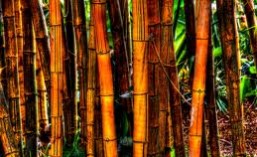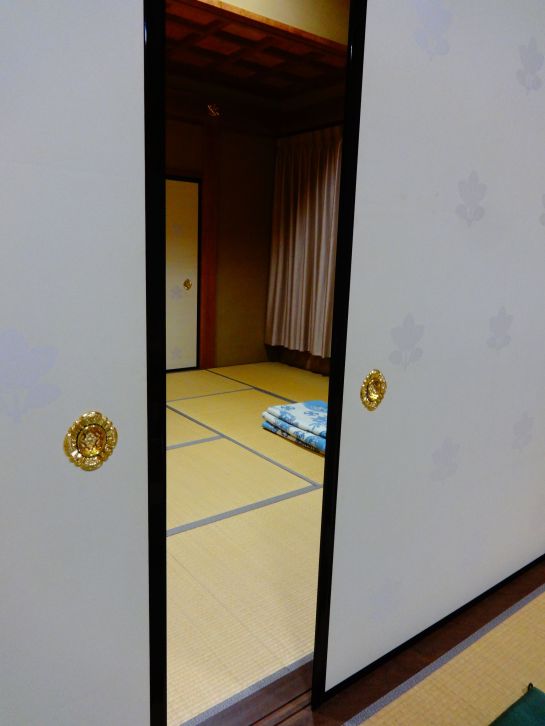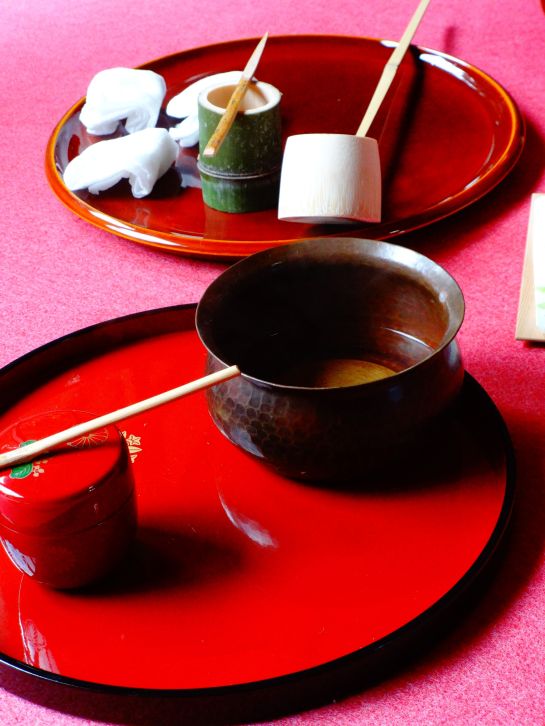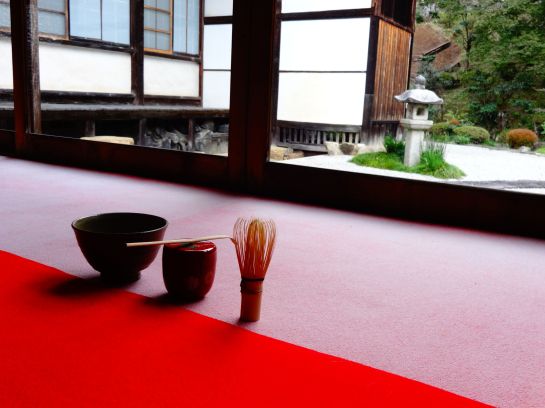The last two days have been the best sort of hectic.
Our regularly-scheduled Friday Japanese test was moved back to the third half of Thursday’s Japanese classes, which meant that Friday was opened up for the culture project — visiting a Japanese elementary school for a few hours and, based on the handout we received, teaching the kids. I was assigned to the same group as Matt and Edwin, so I was hoping that Edwin’s bubbly personality would suck most of the kids’ energy toward him. There’s only so much 4th-grade screaming my head can take.
It wasn’t until we actually arrived at the school — served tea in the conference room, no less — that we realized that we weren’t going to be working together. I was led off by two 4th grade girls as we snaked our way through the complex hallways. They chattered between themselves in Japanese, occasionally throwing an unintelligible English sentence my way to see how I’d respond. To be honest, I think their English skills were better than they let on, and that they were just trying to see what I would do if I didn’t understand them.
Soon enough I saw them swing into the door of a classroom, and as I walked across the threshold, the room of more than 30 students erupted into applause and laughter. They’d arranged their desks in a U shape, and I sat in the front middle facing the U. Behind me, the blackboard had long strings of katakana written something like this:
ウイアーグラーッドツーハーブユーヒアー
The teacher, a 26-year-old woman, pointed to the board and with a quick, “San, hai,” the class began to read the katakana. It came out like this:
Wee ah grad too hab yuu heah. Sank yuu.
I really appreciated the effort, and they did a very good job.
Next up was their chance to ask me any questions that they wanted. I did a short self-introduction, saying where I was from, that I was a 4th-year college student, and that I was 21. They all gasped at my age; to them, I was practically ancient. They made sure to ask me all about “adult things,” like whether or not I had a boyfriend and if I could cook.
Through their questions, they found out all about my favorite color (green), how I enjoy archery, how I like tamago nigiri and pocky (they exploded at that one; echoes of ah, pocky… rippled around the classroom), and how the snow in my hometown gets so deep that it can keep people from leaving their houses. They all promptly raised their arms to see how deep they could make the invisible snow.
We did a short bout of origami; one of the Japanese boys who was most excited to see me immediately volunteered to teach me how to make something. He also made sure that I had a green piece of paper.
Suddenly, a loud alarm bell rang throughout the entire school. All the students started babbling loudly, and the teacher shouted sharply to get them to quiet down. She lined them up, boys on the left and girls on the right, and I grabbed my bag and went to the end of the line as well. They proceeded down the hall in a half-run, speeding down the stairs and into the gym. I tried to keep pace with the end of the girls’ line, making sure I didn’t lose track of the little blue uniform in front of me.
Once we were in the gym, we sat in perfect little rows and the alarm ended. The principle came out and gave a 20-minute address on how it’s entirely possible that someday that drill could be for real — as he explained it to the kids, “A bad person might come in, and we have to know what to do.” He showed that if a bad person grabs you from behind and picks you up, you can fight them off.
My school never had lockdown drills, so this was all new to me. It was a relief, then, when we finally were released from the gym and set free outside. The entire school dressed in running uniforms and, with their teachers jogging encouragingly beside, made their way in a circle around the track over and over again. I reunited with Edwin, and we stood talking and watching the elementary schoolers run, a mass of purple shorts punctuating the bobbing white shirts of hundreds of students.
After that, Edwin was lucky enough to find a Japanese boy from Bolivia, and the two of them launched off into a speedy Spanish conversation. His teacher stopped and looked, wide-eyed. I leaned out from behind Edwin and said simply, すごいですね。[It’s amazing, isn’t it?] She smiled and nodded.
What was left of our day was spend in the gym again as we became both teachers and participants in Shinkansen — the English Version. We taught the students Rock, Paper, Scissors in English as the alternative to their regular Janken, and then my teacher for the day went up on the stage (because every school has a piano stage in their gym?) and started playing the piano. We all had to wander around, and whenever the music stopped, we had to do Rock, Paper, Scissors with whoever was next to us. If you lost, you had to hold on to the winner’s shoulders and follow them around. Eventually the train gets bigger and bigger — that’s why it’s called Shinkansen.
*****
I spent much of the day after the elementary school resting and trying to get some of my weekend to-do list off of my plate. At about 7:30pm, Anna and I headed off for one experience that, in all my travels abroad, stands as one of the best. Ever.
In the dark of night, our fingers chapped and stiff from the November cold, we made our way along the gravel entryway to Seiryoji Temple. Brian and Jakob joined us, and together the four of us started on our journey.
As we approached the genkan (where you take off your shoes), the soft rustle of clothes echoing down the hallway was the only sound we heard. A monk appeared in front of us, his layered black and tan robes fluttering and finally coming to rest at his sides as he bowed and welcomed us in. As best we could hear, his name was Gyoka. Lining our shoes at the entrance, we turned and followed him without a word as he led us up the large wooden steps to the second floor of the temple.
He made no sound as he walked.
In a large room behind a larger sliding door was a low table surrounded by thick green pillows. He asked that we sit and enjoy the snacks he had prepared; when it was time for zazen before bed, he would come and get us.
Almost as soon as the sliding door was closed, all of us sprang to our feet and started exploring the intricate room full of Buddhist decorations.
We barely had time to savor them all before the monk returned, gesturing for us to come with him. We followed him through the huge temple compound, finally coming to a giant, open room adorned in the center with the glittering gold of a shrine to Buddha. We sat on the benches in front of the shrine and observed him as he completed his night’s prayers and sutra reading. After about 20 minutes of his beautiful, droning chant and the fulfilling ring of the bowls, he also offered to let us up by the incense if we wanted to go.
Later, as we approached a building on the opposite side of where we’d just been, I began to feel just a little nostalgia creeping in. I have been to Seiryoji once before, and just like I was then, I was now walking down the long hall toward the meditation corridors.
The nice thing about Seiryoji’s particular branch of zazen is that it is not like the meditation of other religions. In zazen, the goal is not to achieve enlightenment, remove sin from the body, or anything else. It is just to relax and calm the body. Zazen is the intentional practice of relaxing. Your eyes are open, and you are free to think about anything you want.
I settled myself on one of the small but comfortable round pillows, ensuring that the vertical calligraphy written on it was facing backward (the meditator is facing the wall, so the inscription is facing outward). Folding my hands gently, left inside of right, I allowed myself to relax. My thoughts wandered, and I ended up spending most of the time contemplating how Gyoka, the only monk in this giant temple, keeps to his incredibly strict lifestyle with no need for accountability.
There are no other monks to ensure that he gets up at 4AM. He will not be punished if he does not pray for hours. If his back hurts and he’s tired and sick, no one would notice that he does not bow all 6 times during his prayer. And yet he does, because his belief system is the most important thing in his life. He has a religion, and he follows it. I think there is a lot to be said for that, whether you’re Buddhist, Christian, or anything else, especially in this generation of lackluster “when it’s convenient” religion.
We only spent 20 minutes on zazen, but he normally does it for an hour in the morning and at least one hour in the evening. He led us back to the room we had been in and sat down with us. For the next hour, we talked with him in Japanese about everything from why he had become a monk to what his family was like.
He was born in a temple, and after his father died when he was young, he was not sure what would happen to him for the rest of his life. He had his mother, but he felt that he had no sure path before him, so he chose to be a monk and perhaps bring honor to the Buddha for ensuring that his birth in the temple was a safe one. His father, also a monk, had a great influence on him too in the short time they were together. His mother was the one who had first welcomed us to the temple before he came out to greet us.
He was a cheerful, kind, and gentle person, always working hard to make sure that we were comfortable. He did his best to make sure that the chill of the wooden temple didn’t creep into our room. Finally, at around 10, he dismissed himself and said that we were free to stay and chat around the table or make use of the futons and go to sleep if we’d like.
Because sleeping in a temple. That’s a win.
Someone slid open the door as we prepared to go to bed, and Gyoka passed by us with a smile, this time in a blue hoodie. We all kind of curled up in shock for a moment.
*****
I rather enjoy sleeping on futons, so despite the low 40s November chill and the fact that Anna snored all night, I liked the actual sleeping part of sleeping at a temple. We got up at 6, ready to meet Gyoka again, as he’d said that he had more that he wanted to teach us about Japanese culture.
We went with him again to watch him pray, and this time as a show of respect for us his prayer and sutra was for our continued health and wellbeing. He even switched to both ground incense and incense sticks. I spent much of the time contemplating the two vertical lines on the back of his bald head, wondering if they were just creases of skin or some sort of Buddhist monk mark.
After the prayer, we ate a true monk’s breakfast — incredibly simple and free of any restricted foods. That meant that in the end we had rice porridge with chunks of potato, a bowl of pickled daikon radish, sweet pickled carrots, and tofu, followed by some fruit. I was full by the time we were done, and we all mostly sat quietly. I occasionally glanced sidelong at Gyoka, but he looked so serene and peaceful sitting there eating in small bites, savoring every flavor, that I didn’t want to disturb him. His mother, who served us the porridge, eagerly reminded him that there was more in the pot. Always a mother.
Our last bit of time with Gyoka was spent in tea ceremony, but this time reversed — we were the ones preparing tea. I have attended 3 tea ceremonies so far (not counting the one with Gyoka), and this was the first time that I myself would prepare the tea. The strictly ritualistic part — turn the bowl two times, bow, etc — has become much easier for me to remember, though I certainly can’t do it gracefully. My clinking and clattering as I prepared the tea contrasted with Gyoka’s smooth silence.
We began with the seasonal sweet, as normal. It was a beautiful and utterly delicious type of mochi shaped like an autumn leaf.
Gyoka prepared the instruments.
After whisking the rich green powder into a frothy soup, I bowed and thanked the monk before turning the bowl and drinking. I’ve never cared for tea, especially the bitter green tea prepared at ceremonies, but I nonetheless drank it all, punctuating the end with the requisite loud slurp.
We returned to the room with the low table one last time, and I was sad to see that my stay at the temple was already over. Gyoka sat with us a little while longer and answered any more questions that we came up with. He wrote down some of his favorite temples in Japan, encouraging us to see them if we could. I asked him the whereabouts of the monk with whom I’d done zazen the previous year; Gyoka said he’s in Osaka at the moment, at one of their temples.
It was a little tough to say goodbye to our new monk friend, but he encouraged us to come back and visit any time we’d like. His hospitality was outstanding, and we made sure to leave a considerable donation with his mother. She thanked us excessively and, as any Japanese woman does, worried about if her food tasted good to us. We told her that it was great, and she, like Gyoka, said that she was extremely thankful that we’d come. They were such a wonderful family that I really hated to leave. Gyoka encouraged us to explore any nook or cranny of the temple that we’d like.
[Sorry I don’t have pictures for this section — I can’t seem to get them off my camera.]
The rain was coming down in a chilly mist, and I’d had barely an hour to sit down between returning from the temple and an important meeting and leaving again. I made my way to Nanamagari, or Seven Bends, the place in Hikone famous for its local craftsmanship of butsudans, or Buddhist altars. Hikone is known throughout the country as the premier spot for high-quality hand-crafted butsudans, and I tagged along with Shiga Ken Dai’s religion class students as they explored the shops under the watchful guidance of a native Japanese professor.
When the professor realized that I wasn’t a part of his class, he asked me to write my name on his attendance sheet, which was full of pictures of the other students. He looked closely at me, his eyes narrowed. Then he drew a circle and, with frequent glances up from his paper, sketched me into the circle on his class picture roster.
When another helper came up with her own attendance sheet, she started referencing his drawing before sketching her own. So I had two free portraits of myself done that day.
We wandered along the streets, and the rain came and went whenever it pleased. A metalworker detailing a wedding ring plate stopped to chat with us about his work with butsudan metals, and after that we wandered from craftsman to craftsman, each masters at their work, and each playing a part in sculpting just a piece of what would later come together to be a whole butsudan. The woodcarvers made intricate dragon panels of single pieces of wood or customizable panels with removable parts — a specialty peculiar to the Hikone region. Gold leafers coated the work in brilliant metal, dusting the flakes and smoothing the sculptures until the wooden floor of the shop, once rough wood, was smoothed by the gold that had found its way into the cracks in the floor.
Down the street, townspeople were making geta.
One of the last places that I visited was a shop full of completed butsudan; finally, I could see all of the individual pieces come together. The woodcarver had said that even his most intricate work was probably only about a tenth of the butsudan’s final cost, and it seemed that he was right — I spent much of my time in the shop playing the price game, trying to find the most expensive shrine. I finally came upon a rather large one in the $340,000 range, and none of the others could top that price.
After tracking the butsudan in its development from beginning to end, I returned to my bike just as the rain started again. It was a quick trip to AL Plaza — illuminated by a rainbow leading right to it — to recover Anna’s wallet (lost earlier in the day) before I headed home, curled up under the covers, and returned from ancient Japan.















